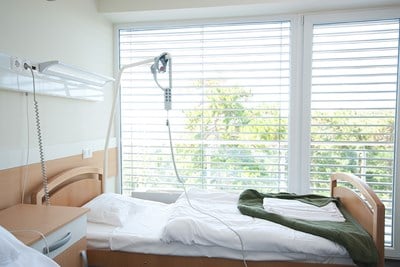Pressure ulcers, often referred to as bed sores, are wounds that develop from prolonged pressure on the skin—particularly bony areas where the skin tends to be thinner or less insulated. Those with a limited range of motion or who are bed- or wheelchair-bound have a higher risk of developing these sores.
Even with careful preventative care, pressure ulcers may still develop—and they can be difficult to treat. Here is a look at what contributes to creating pressure injuries and their different stages.
Pressure Ulcer Factors
The major factors contributing to the development of sores are pressure, friction, shear, and moisture. Pressure is how hard the area is pushing down or being pushed back on, friction refers to things like clothes or sheets that will rub more or less continuously on the area, and shear is essentially the combination of friction and gravity pulling on the body.
Predicting the risk of bedsores for an individual patient is best performed using clinical assessment—the Braden Scale or Norton Scale are top-rated for this purpose.
Types of Pressure Ulcers
The National Pressure Ulcer Advisory Panel breaks bed sores down into four different categories, which were updated in early 2016. The scale goes from least to most severe, with Stage 1 being the least and Stage 4 being the most. Additionally, there’s a rare condition that surpasses stage 4 used for pressure injuries beyond determination—patients are often covered in dying tissue that takes on a brown, yellow, or black covering.
Stage 1
Non-blanchable erythema of intact skin: The skin hasn’t broken, but the area may feel warmer, cooler, or tougher than the surrounding skin. When you press your finger to the area, it doesn’t lighten like skin normally does with pressure. The area may also be a different color than the surrounding skin, with the wound appearing red on lighter complexions and discolored on darker complexions.There’s no damage to the deeper tissues.
Stage 2
Partial-thickness skin loss with exposed dermis: The skin begins to decompose and appears red or pink with a wetness to it. The dermis and the epidermis begin breaking down; the top two layers may be missing altogether, but the ulcer hasn’t gotten too deep yet. Blistering is likely to occur—and may or may not rupture. The pelvis and heel commonly develop stage 2 pressure injuries.
Stage 3
Full-thickness skin loss: At this stage the skin is so damaged the fatty tissue, adipose, beneath the skin is usually visible. Dead skin may scab, darken, or fall off. The wound can be quite deep, particularly depending upon the area of the body. None of the muscles, tendons, or structures beyond the adipose are affected.
Stage 4
Full-thickness skin and tissue loss: The wound is so deep at this point that there may be muscles, tendons, cartilage or even bone exposed in the wound. Additionally, the wound may spread out wider into the body, beneath still seemingly fine skin.



